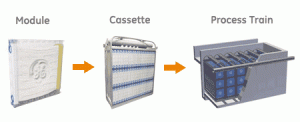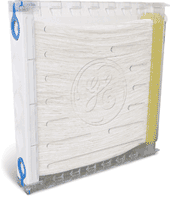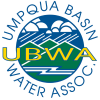Water Quality
“A fundamental promise we must make to our people is that the food they eat and the water they drink are safe.” – President Bill Clinton, Safe Drinking Water Act Reauthorization, August 6, 1996
The Safe Drinking Water Act (SDWA), passed in 1974 and amended in 1986 and 1996, gives the Environmental Protection Agency (EPA) the authority to set drinking water standards. This document describes how EPA establishes these standards.
Drinking water standards are regulations that EPA sets to control the level of contaminants in the nation’s drinking water. These standards are part of the Safe Drinking Water Act’s “multiple barrier” approach to drinking water protection, which includes assessing and protecting drinking water sources; protecting wells and collection systems; making sure water is treated by qualified operators; ensuring the integrity of distribution systems; and making information available to the public on the quality of their drinking water. With the involvement of EPA, states, tribes, drinking water utilities, communities and citizens, these multiple barriers ensure that tap water in the United States and territories is safe to drink. In most cases, EPA delegates responsibility for implementing drinking water standards to states and tribes.
A National Primary Drinking Water Regulation (NPDWR or primary standard) is a legally- enforceable standard that applies to public water systems. Primary standards protect drinking water quality by limiting the levels of specific contaminants that can adversely affect public health and are known or anticipated to occur in water. They take the form of Maximum Contaminant Levels or Treatment Techniques, which are described below.
A National Secondary Drinking Water Regulation (NSDWR or secondary standard) is a non-enforceable guideline regarding contaminants that may cause cosmetic effects (such as skin or tooth discoloration) or aesthetic effects (such as taste, odor, or color) in drinking water. EPA recommends secondary standards to water systems but does not require systems to comply. However, States may choose to adopt them as enforceable standards. This information focuses on national primary standards.
Drinking water standards apply to public water systems (PWS’s), which provide water for human consumption through at least 15 service connections, or regularly serve at least 25 individuals. Public water systems include municipal water companies, homeowner associations, schools, businesses, campgrounds and shopping malls.
Umpqua Basin Water is constantly testing the Raw and Finished water. We perform more than 300 tests during the year to insure that this water is safe for consumption. We are checking the water in several locations in the water distribution system, the filtering system and in the raw feed water. We are looking for bacteria, viruses, inorganic, volatile organic, organic, non-organic compounds, cryptosporidium, giardia, arsenic, radionuclides, coliform, ecoli, cyanotoxins such as cylinderospermospin and microcystins, and many, many other compounds. All of these tests are perform by State and Federal certified laboratories.
Every July 1st we make available our water quality report. This report is called the “Consumer Confidence Report” and it is mandated by the State of Oregon and EPA. Every water system in the United States must comply with this regulation. This report is available in PDF format and it is easy for you to download, print or save so that you can read it at your own leisure. We start placing a notice on your water bill around May of each year. Please see the links to the current and past water quality reports below.
If you did not get your CCR in the mail you can download the current and past copies. Just click on the link and you can either read the report of your choice online or download it for viewing later.
Feed water flows into the membrane tanks and treated water is drawn through the membranes during production by applying a vacuum to the inside of the membrane fibers. The water removed by permeation is replaced with feed water to maintain a constant level in the tank.
Multiple cassettes are joined to form what is known as a process train. The train is a production unit containing a number of cassettes immersed in a membrane tank. Multiple process trains form a ZeeWeed treatment plant.
 The particles that are rejected by the membrane pores remain in the process tank and are periodically removed by a process called a Backwash (BW). During a backwash, filtered water reversed through the membrane fiber to dislodge any particles that may be physically lodged in the membrane fiber. Simultaneously, aeration scours any solids that are attached on the surface of the fibers.
The particles that are rejected by the membrane pores remain in the process tank and are periodically removed by a process called a Backwash (BW). During a backwash, filtered water reversed through the membrane fiber to dislodge any particles that may be physically lodged in the membrane fiber. Simultaneously, aeration scours any solids that are attached on the surface of the fibers.
To prevent fouling of the ZeeWeed membranes operators are required to perform regular maintenance cleans (MC). Maintenance cleaning begins by draining the membrane tank and soaking the membranes in a cleaning solution for several hours. The solution is then drained and chemical residues are flushed from the membranes before the system resumes normal operation




